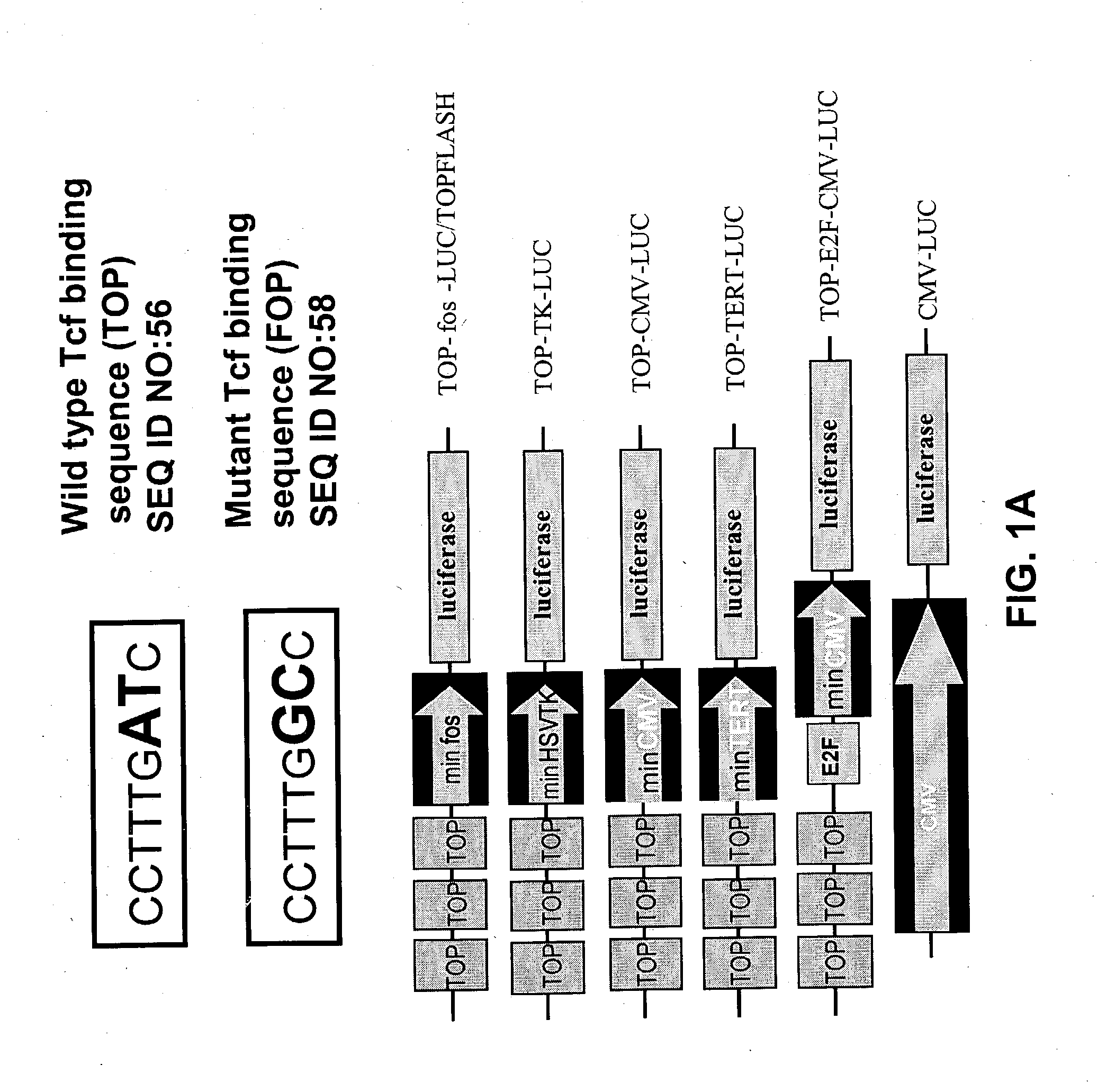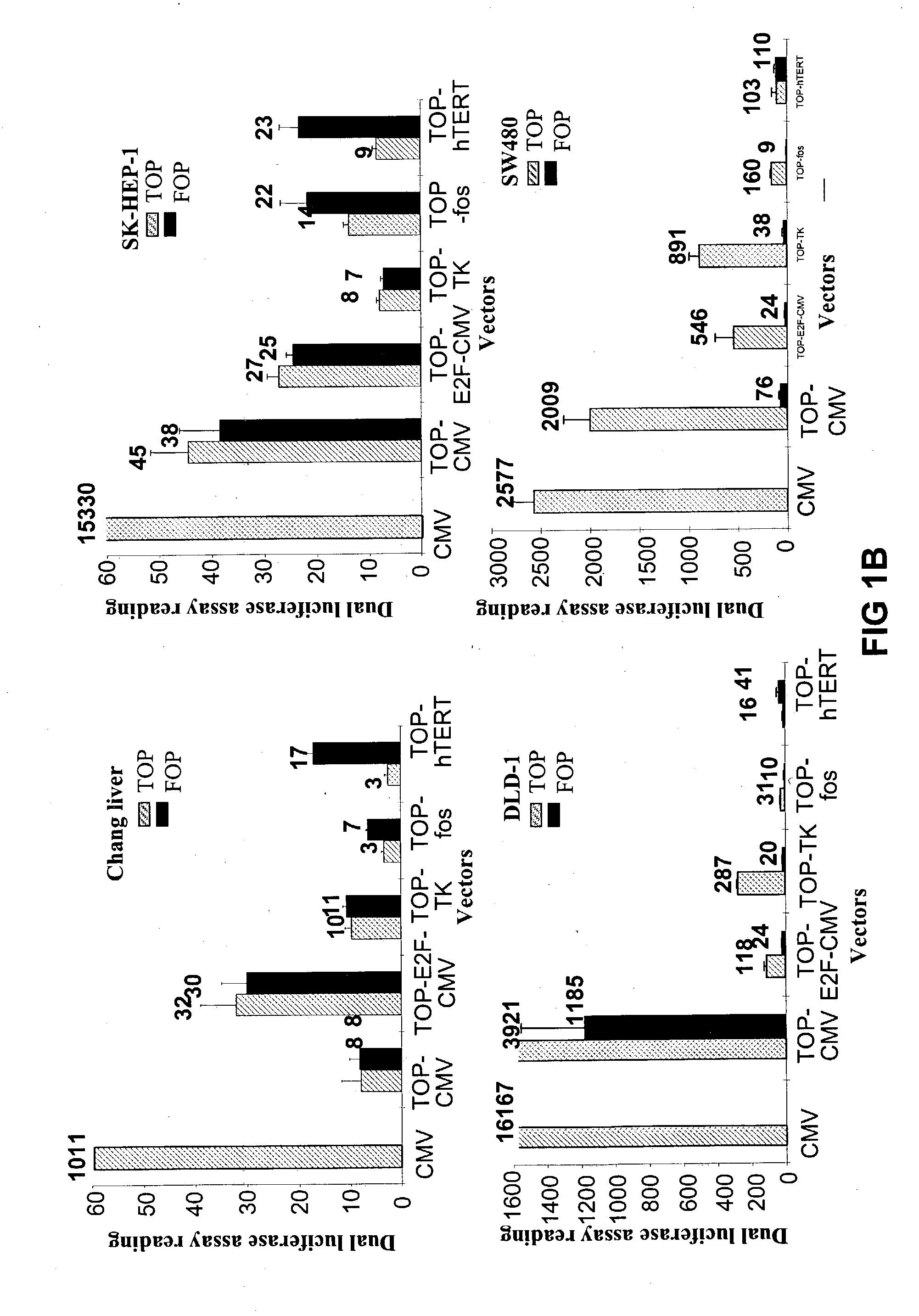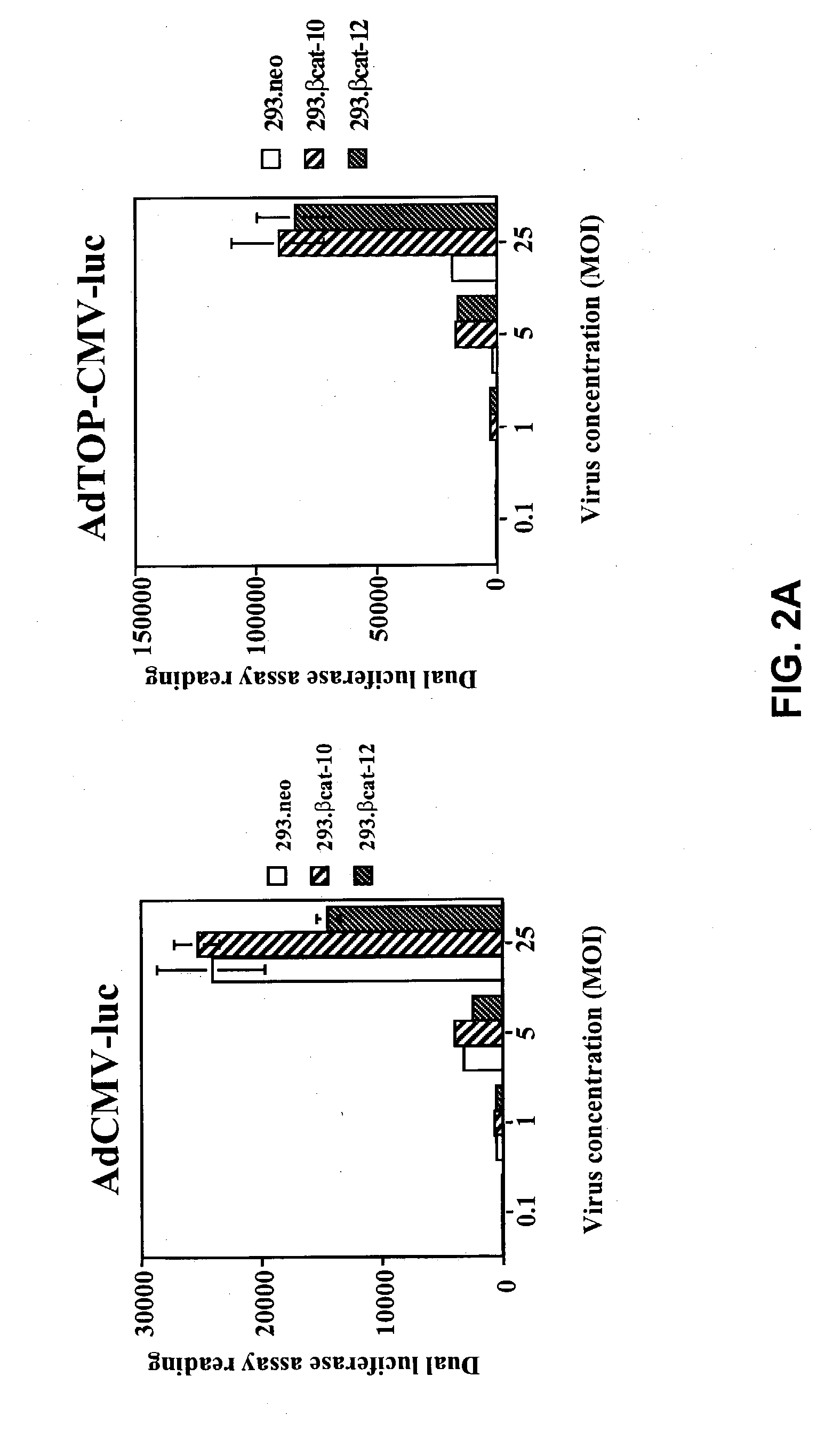Bipartite T-cell factor (Tcf)-responsive promoter
a t-cell factor and promoter technology, applied in the direction of peptide/protein ingredients, aerosol delivery, dsdna viruses, etc., can solve the problem of cancer being a serious health issue for millions of individuals, and achieve the effect of facilitating expression of a therapeutic gene, enhancing the activity of the second promoter, and efficient and selective selection
- Summary
- Abstract
- Description
- Claims
- Application Information
AI Technical Summary
Benefits of technology
Problems solved by technology
Method used
Image
Examples
example 1
Analysis of Multiple .beta.-Catenin / Tcf-Responsive Promoters
[0394] The present invention is directed to a gene therapy system, particularly for the treatment of cancer. In a specific embodiment, the cancer cells in the individual being treated comprise an activated .beta.-catenin / Tcf pathway. In another specific embodiment, the cancer cells are colon cells. In a further specific embodiment, the cancer cells are metastasized colon cells, such as to the liver. In a preferred embodiment, the compositions and methods described herein are deleterious to cancer cells but do not affect cells that do not have an activated .beta.-catenin / Tcf pathway.
[0395] For the gene therapy system, multiple .beta.-catenin / Tcf-responsive promoters that can selectively target colon cancer were analyzed. The activities of five sets of .beta.-catenin / Tcf-responsive promoters were compared in colon cancer cell lines. Two well-characterized colon cancer cell lines, SW480 and DLD-I, were selected. In both of the...
example 2
Analysis of Multiple Adenoviral Vectors
[0399] In specific embodiments of the present invention, an adenoviral vector is the vector for the delivery system and a suicide gene, such as the HSV-TK gene, is the therapeutic gene. Four adenoviral vectors, AdCMV-luc, AdTOP-CMV-luc, AdCMV-TK, and AdTOP-CMV-TK were constructed. The adenoviral vectors were constructed by the AdEasy system (He et al., 1998b). The transcription termination sequences from the pGL3-Basic (Promega) and pcDNA3 plasmids (Invitrogen; Carlsbad, Calif.) were inserted into pShuttle plasmid in a tail-to-tail orientation to construct pShuttleGB. The promoters and reporter genes were then cloned into pShuttleGB vectors. Genomic adenoviral plasmids pAdCMV-luc, pAdTOP-CMV-luc, pAdCMV-TK, and pAdTOP-CMV-TK were generated by homologous recombination in E. coli strain BJ5183 from the pShuttleGB vectors. Adenovirus production and purification were performed by following standard procedures.
[0400] To test the selectivity of these...
example 3
Ex Vivo Manipulations with Selective Adenovirus Vectors
[0404] To test the effectiveness of AdTOP-CMV-TK / GCV in suppressing tumor formation in animals, an ex vivo strategy was carried out. DLD-1 and SK-HEP-1 cells were infected with adenoviruses in vitro, harvested after 24 hours, and then inoculated subcutaneously into nude mice. The animals received intraperitoneal GCV treatment daily for 10 days, and the sizes of tumor were monitored twice per week.
[0405] In FIG. 3A, human DLD-1 colon cancer cells were infected with 25 MOI of adenoviral vectors in serum free medium. Six to twelve hours after adenoviral infection, equal volumes of medium supplemented with 10% FBS were added to the infected cells, which were then incubated at 37.degree. C. overnight. At 24 hours after adding the virus, the cells were trypsinized and inoculated subcutaneously into nude mice with 2.times.10.sup.6 DLD-1 cells per mouse. One day after inoculation of cancer cells, the mice in treatment groups received da...
PUM
| Property | Measurement | Unit |
|---|---|---|
| pressure | aaaaa | aaaaa |
| diameter | aaaaa | aaaaa |
| diameter | aaaaa | aaaaa |
Abstract
Description
Claims
Application Information
 Login to View More
Login to View More - R&D
- Intellectual Property
- Life Sciences
- Materials
- Tech Scout
- Unparalleled Data Quality
- Higher Quality Content
- 60% Fewer Hallucinations
Browse by: Latest US Patents, China's latest patents, Technical Efficacy Thesaurus, Application Domain, Technology Topic, Popular Technical Reports.
© 2025 PatSnap. All rights reserved.Legal|Privacy policy|Modern Slavery Act Transparency Statement|Sitemap|About US| Contact US: help@patsnap.com



